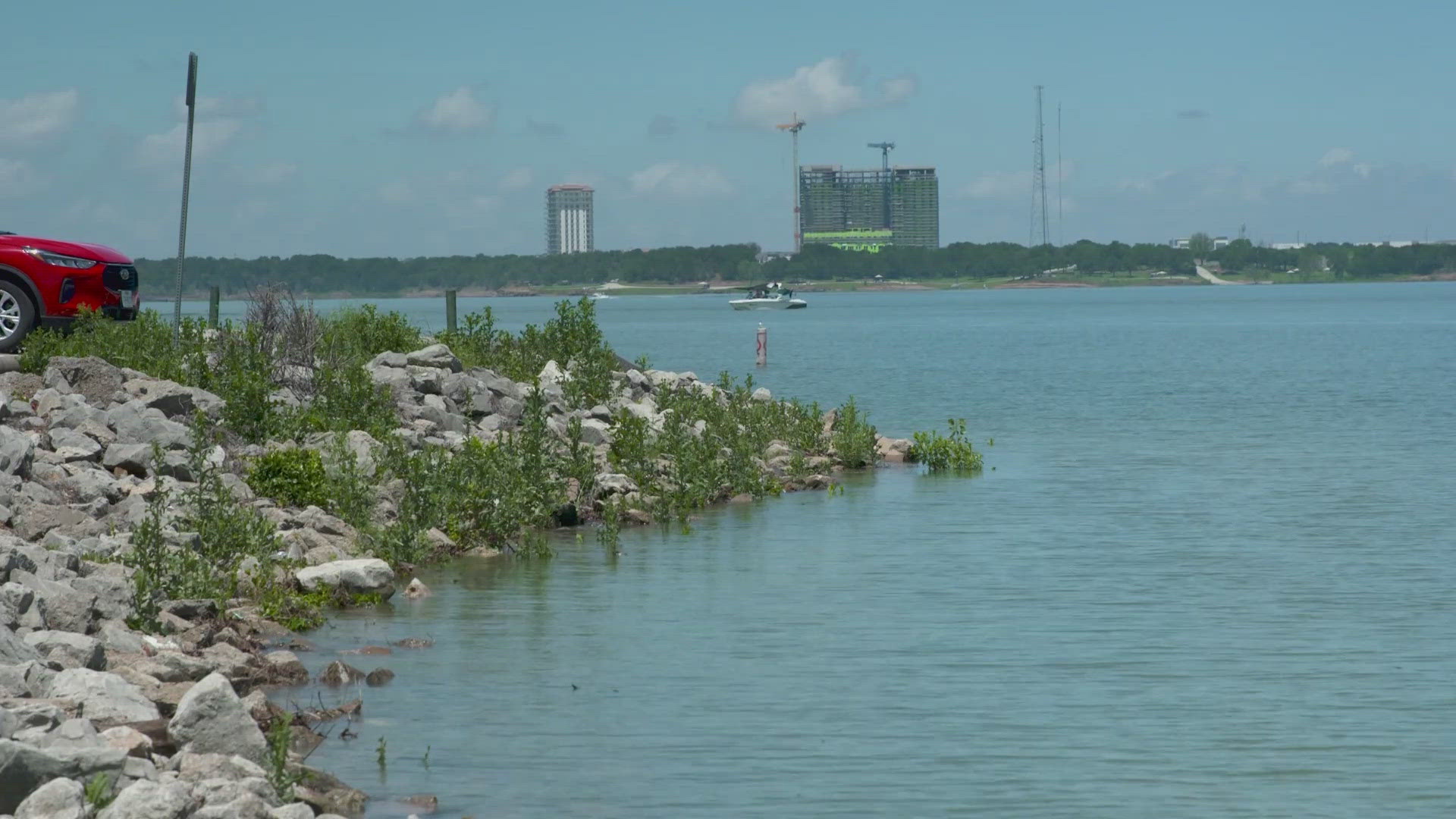TARRANT COUNTY, Texas — The U.S. Army Corps of Engineers is taking steps to prevent flooding after weekend rains doused North Texas.
Engineers closed some dam gates Monday at area reservoirs, including at Grapevine Lake, to prevent their water from flowing into the swollen Trinity River. The lakes will hold the excess water until the Trinity River drains its own surplus into the Gulf of Mexico and its flow stabilizes.
The move is proof March and April were especially wet, a welcome change from recent year's droughts.
"Right now, I'd say it's a good thing to be a little above normal," USACE water manager Simeon Benson told WFAA. "No big deal. We can manage that."
After the storms, corps data indicates water is slightly higher than the engineer's preferred elevation in 11 of the 15 lakes and reservoirs in North Texas's Trinity River basin. Water levels at Lake Bridgeport, Eagle Mountain Lake, Lake Worth, and Cedar Creek Reservoir remain below the corps' target elevation, called the "conservation pool."
Grapevine Lake rose one foot from Sunday to Monday. Though its water is now about three feet above the corps' target level, the reservoir has space to hold another 22 feet of water.
That means North Texas's reservoirs can handle another round of storms expected this week, Benson said. But if heavy rain continues throughout May, traditionally the area's wettest month, the corps may have to operate its floodgates more liberally.
"If it does rain a lot more, then we'll have to make some different choices," he said. "For right now, we have plenty of storage."
The current water level has little impact on recreational activities at Grapevine Lake. Boaters will have to use high water ramps to get their vessels in the water, and park managers noted that fire ants and snakes may be more active.
The water is not yet high enough to close picnic pavilions or campsites.
Benson noted the wet start to the year puts DFW in a "strong position" to minimize potential drought effects later in the year, though he said it's hard to predict whether the lake levels will hold through the spring.

